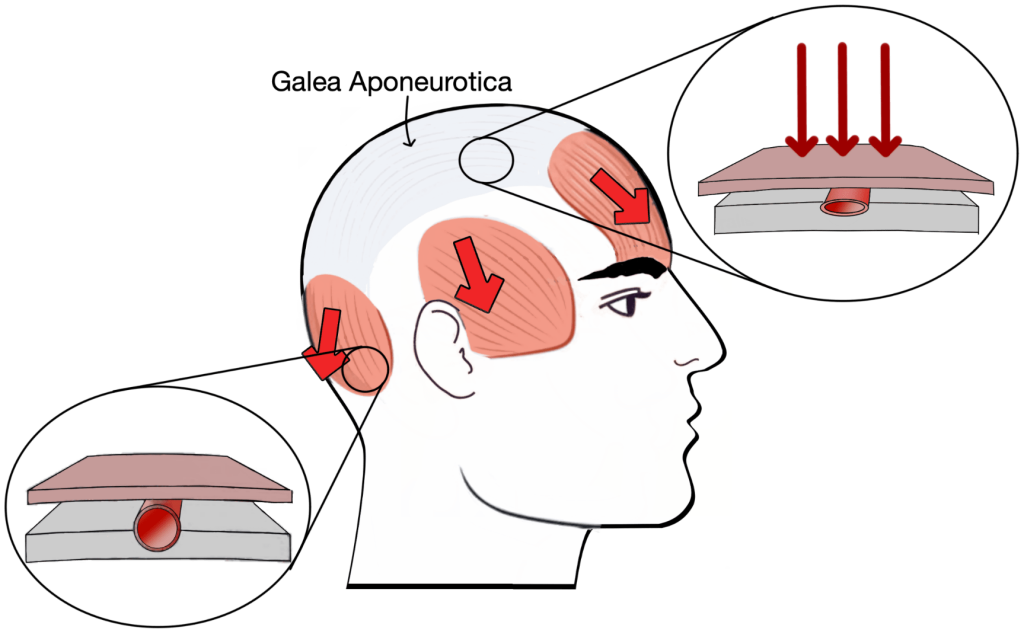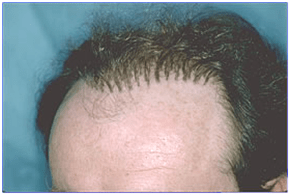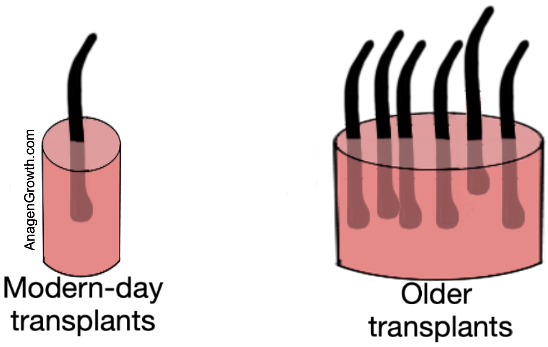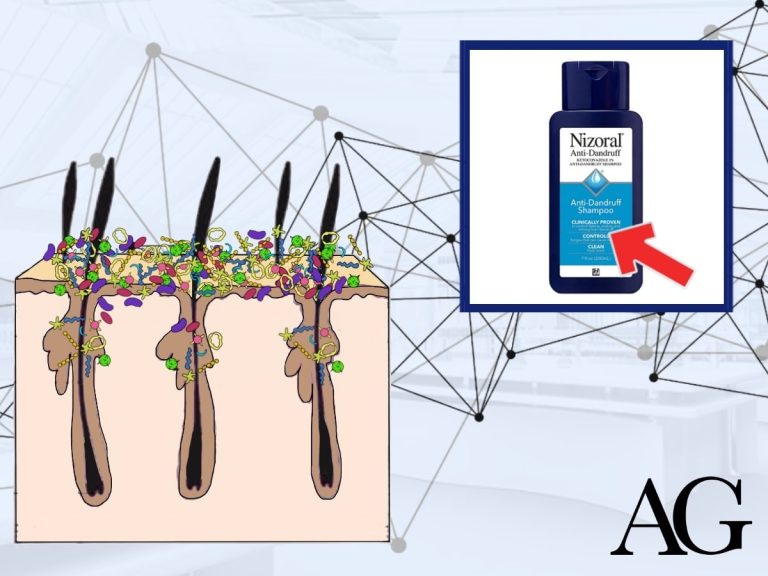Most top-ranking articles on Google claim that hair transplants are permanent. But is this really true? As is often the case, the truth is often dependent on some caveats and nuances. In this article, we’ll explain why transplanted hair is not immune to future balding.
DHT: An unforgiving hair-thinning hormone
Over 2000 years ago, Aristotle observed that eunuchs (castrated men) do not go bald. This was the first clue that baldness is in some way related to androgen hormones. In 1943, Dr James Hamilton expanded upon this observation with a detailed report showing that men who were castrated before puberty never go bald. Furthermore, men whom were castrated after puberty, experience a cessation of further hair loss.1

Like castrates, whom have tiny amounts of testosterone, people with a 5-reductase deficiency (the enzyme responsible for converting testosterone into dihydrotestosterone [DHT]) do not experience hair loss.2
At this point, the widely accepted, mainstream narrative for hair loss was that DHT binds to the androgen receptors within hair follicle cells. DHT then exerts it’s hair-thinning properties on the hair follicles, causing baldness.

The question of why an average hair loss sufferer experiences hair thinning on the top of the scalp but keeps their thick hair on the sides and back of the head was attributed to genetics. The idea being that while hair follicles on the top of the scalp are genetically sensitive to DHT, hair follicles on the sides and back of the scalp are genetically immune to the hair-thinning effects of DHT.

Scalp environment: An opposing school of thought
In the 1950s, an opposing theory that questioned the idea that the follicles on the top and sides of the scalp are genetically different started to gain some traction. This was the scalp tension theory.
The scalp tension or scalp environment theory claims that hair follicles on the top and sides of the head likely do not have different sensitivities to DHT. Rather, it is differences in the tissue immediately surrounding the hair follicles that determine whether the follicle becomes thinner or not.
Different parts of the scalp, or the body for that matter, have different levels of vascularity, dermal thickness and skin tension to name just a few characteristics. These factors may influence how hair follicles grow (or don’t grow!).
The scalp tension theory argues that balding-prone regions of the scalp exactly overlie the galea aponeurotica (a layer of dense fibrous tissue).

By exerting pressure on the underlying blood vasculature, the galea can create a ‘tight’ scalp which amongst other things, can reduce blood circulation and lead to hair follicle miniaturisation (you can learn more about this in the free book here).
This introduced the clash of two separate schools of thought.
Hair transplants 101
Just how the name suggests, hair transplants take hair from one part of the body (called the donor site) and implant it into another part of the body (the recipient site).
The donor site is usually the back of the scalp, which is generally considered to be immune against balding. The recipient site is usually the top of the scalp where balding is taking place.
In the early days, hair transplants took large grafts with many hair follicles. This gave the transplant a fairly obvious and unnatural look. Nowadays, the art has has been refined to the point where a good hair transplant is practically indistinguishable from a naturally full scalp.

Dr. Orentreich’s hair transplants
Dr. Orentreich sought to answer the question of whether hair-thinning was genetically programmed within the hair follicle or wether the surrounding scalp tissue’s influence on the hair follicle is what dictates a follicle’s destiny.
In the hair transplant world, this is known as “donor dominance” versus “recipient site influence”.
In 1959, Dr. Orentreich (the world’s first hair transplant surgeon), set up an experiment. He took 52 patients with pattern baldness and transplanted:
- Skin grafts of 6mm, 8mm and 12mm in diameter from non-balding regions of the scalp into balding regions of the scalp.
- Skin grafts 6mm, 8mm and 12mm in diameter from balding scalp regions into non-balding regions of the scalp.
This experiment would determine wether hairs are ‘donor dominant’ (genetically programmed to either bald or not go bald) or wether recipient site influence (tissue surrounding the hair follicle) determines wether a hair follicle thins over time.

2.5 years after the transplants, Dr. Orentreich brought the transplant patients back in for observation. He noticed that, in patients with androgenic alopecia:
- Non-balding hairs transplanted to balding regions kept growing normally.
- Balding hairs transplanted to non-balding regions kept thinning at the same rate.
Donor dominance appeared to come out victorious. A number of follow up studies confirmed the idea of donor dominance.
Problems with Dr. Orentreich’s transplants
Over time, the donor dominance conclusion of Dr. Orentreich study was put into question. This is because of some factors that were not accounted for during the study.
Limited observation time
Each hair follicle cycles through phases of growth, rest and shedding. After the hair strand sheds, the hair follicle degenerates and a new one grows in its place. This process repeats over and over again. The growth phase typically lasts between 2 to 7 years.
Pattern baldness progress through a phenomena called ‘hair follicle miniaturisation’. In a balding scalp, a after a hair follicle degenerates at the end of a cycle, a smaller, thinner follicle grows back in its place. This follicle then produces a thinner hair strand. Because of this, hair thinning takes place in between hair cycles, not during them.
Since a hair cycle can last up to around 7 years, hair thinning can take many years to become cosmetically visible. Two hair cycles could last 14 years! Because of this, the 2.5 year long observation time window Dr. Orentreich measured in his experiment, may not have been long enough to draw a meaningful conclusion from.
A more meaningful observation time horizon would include multiple cycles. A 10 to 15 year time window would allow better conclusion stop be drawn from the results.
Large graft size
Hair transplants 70 years ago were different to the hair transplants being conducted today.
In the 1960s, hair transplants typically transplanted 4mm biopsies with multiple hair follicles in them. Nowadays, grafts are much smaller, some punch biopsies even transplanting single hairs. This increases the ability to produce natural looking transplants and reduce scarring.

The diameter of the skin punches in Dr. Orentreich were 6, 8 and 12mm in diameter. Nowadays, hair transplant grafts are smaller than 1mm.
This means that Dr. Orentreich was transplanting hairs AND their surrounding tissue! It is unlikely that the adipose tissue adjunct the the hair follicles being transplanted has the same characteristics as the tissue in the recipient site. Factors such as vasculature and fibrosis were not accounted for in this experiment.
Recent hair transplant studies
Over time, hair transplants have started using smaller grafts to achieve a more natural appearance.
Smaller grafts mean less tissue surrounding the transplanted hair is transplanted. More recent hair transplants have started showing evidence of recipient site influence.
This study followed up with 112 hair transplant patients 4 years after surgery. The follow up at the 4 year mark showed that:
After 1 year, over 80% of the patients saw good growth of the transplanted hair but after 4 years, over 90% of patients saw a reduction in hair volume. Specifically, at the 4 year mark, researches found:
- 55.35% of patients had a moderate reduction in hair density
- 27.67% of patients had a slightly reduced hair density
- 8.03% of patients had a greatly reduced hair density
- 8.92% of patients had no change
Here we have one of the patients in this study.

Of the 112 men, just 10 showed no loss of transplanted hair density four years after their surgery.
This is pretty strong evidence that the tissue immediately surrounding the hair follicle DOES have an influence on how hair grows (or how to doesn’t grow).
Another study investigated body to scalp hair transplants. It mentions that “with regard to body hair transplant it was observed that the recipient dermis influences the body hair growth rate and hair cycle duration to mimic the growth characteristics of the native recipient site hair.”
As Joe Rogan mentioned, a hair transplant is like taking healthy people and moving them where everyone is dying. Joe knows first hand that the recipient site undoubtedly has a major influence on the hair follicle’s survival rate.

What do hair transplant surgeons have to say?
In a 2020 interview between hair transplant surgeon Dr. Nilofer Farjo and biologist Maksim Plikus, the notion of donor dominance versus recipient site influence was discussed.

In this conversation Dr. Farjo mentioned “we do see that over time those hair follicles that have been moved do change so we often get patients 20 years later who come back and they say oh well their their hair follicles that were very robust and their hair transplant they looked very thick at the time that it was done has now started to thin and doesn’t look the same anymore”.
The time horizon mentioned in this quote is 20 years, much longer than the 2.5 year time frame in Dr. Orentreich study.
In response, Maksim said that over the course of years, the host tissue in balding areas can become more integrated with the transplanted hairs and exert a negative influence on their ability to grow.
This idea fits in with the conclusion drawn from another study that investigated the effects of transplanting hairs from the back of the scalp to the leg. In this study, hairs transplanted to the leg began growing more slowly, mimicking natural growth characteristics of hairs native in the leg area.
The study concluded that “these results strongly suggest that the recipient site affects some characteristics of transplanted hairs, such as their growth and survival rates.”
Is there any validity to donor dominance theory?
In the interview with Nilofer Fargo, Maksim gave strong credence to the recipient site influence theory. However, he didn’t completely reject the donor dominance argument. Maisie alluded did also allude to his belief that hair follicles from different anatomic sites can be biologically different.
Furthermore, another hair transplant study mentioned that they “found no change in the color, curl, or caliber of the transplanted body or beard hair.”
Overall, it seems that some hair characteristics such as color may still be more heavily influenced by the donor dominant theory.
Are hair transplants permanent?
Most hair transplants nowadays will likely last a few years. However, if the root cause of baldness is not addressed, there is a significant chance that transplanted hairs will begin to undergo hair follicle miniaturisation. Over the course of a decade, thinning can become significantly pronounced.
Factors influencing how long a hair transplant will last can depend on:
- Graft size. The smaller the graft size, the less the follicles are protected by adipose tissue that is transplanted alongside the follicle. But, remember that smaller grafts can help achieve a more natural look and feel.
- Wether you are addressing hair thinning in the first place. If you have a hair transplant, it may be wise to adopt a hair growth protocol (e.g. dutasteride and/or microneedling) in order to protect your hair from future miniaturisation.

